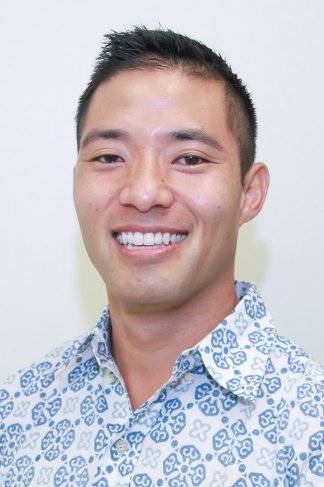Specializing In Dental Surgery
Dr. Blake Kitamura
Oral and maxillofacial surgeon at Oral Surgery Hawaii
Where did you receive your schooling and training?
I attended Punahou High School and graduated in 2001. I completed my undergrad at University of the Pacific in Stockton, and completed my dental school training at University of the Pacific in San Francisco. I came back to Hawaii and did a general practice residency at Queen’s Medical Center from 2008 to ’09, then I went to Carle Foundation Hospital in Champaign, Ill., where I finished my residency training in oral and maxillofacial surgery.
How long have you been in practice?
I graduated dental school in 2008, and I moved back to Hawaii last July.
In addition to my practice at Oral Surgery Hawaii, I also have privileges to use the facilities at Kapiolani Medical Center and The Queen’s Medical Center. I volunteer at Kokua Kalihi Valley and Queen’s hospital, where I teach dental residents.
What got you interested in becoming an oral and maxillofacial surgeon?
When I was at Queen’s Medical Center GPR (general practice residency), I had the opportunity to operate with the oral surgeons there and fell in love with surgery. I really enjoyed taking care of people and the opportunity to perform surgery.
What is oral and maxillo-facial surgery?
Oral and maxillofacial surgery has a really broad scope.
It can be anything from dentoalveolar surgery, where you’re taking out wisdom teeth or regular teeth, to putting in dental implants or augmenting the bone, to cleft lip and palate surgery, benign pathology, malignant pathology, reconstruction, trauma reconstruction and cosmetics.
Within our scope is having the privilege of performing sedation in our office. During our residency training, we go through rigorous training, from airway management and administering medications, to waking up a patient comfortably after a surgery.
What is dental pathology?
Dental pathology can be broken up into malignant and benign pathology.
Malignant pathology includes entities like salivary gland cancers to squamous cell carcinoma or malignant oral melanoma.
Benign pathology includes cysts and common tumors that occur in the jaw that need to be removed to rule out any cancerous pathology.
What do you most commonly treat?
We commonly treat patients who need their wisdom teeth removed, or we remove decayed teeth and place dental implants. Dental implants are a very important part of our practice.
Any latest breakthroughs, as far as oral and maxillofacial treatment or equipment?
We have a Carestream 9300, which is a CT scan, in our office.
It has very low radiation, less than a full mouth series of X-rays, and it allows us to treatment-plan complex procedures.
It provides us with 3-D imaging for implant procedures. We also provide patients with the comfort of iTero intra-oral scanning.
This is a service for our referring doctors, where we will scan our implants so our patients do not have to sit through uncomfortable impressions.
Anything else you’d like to mention?
Nobody likes coming to an oral surgeon. Nobody likes getting teeth pulled.
Patients are usually in a lot of pain — so whether taking wisdom teeth out or doing dental implants, your experience is very important to us.
rfournier@midweek.com






